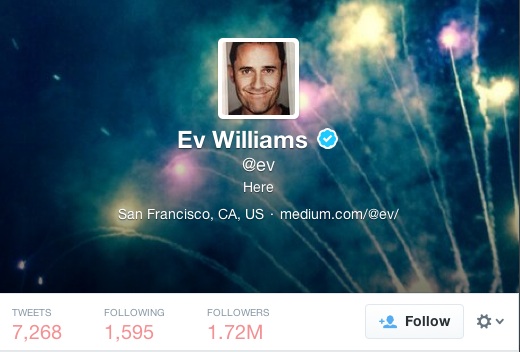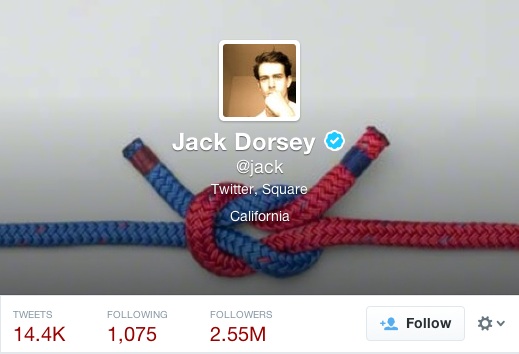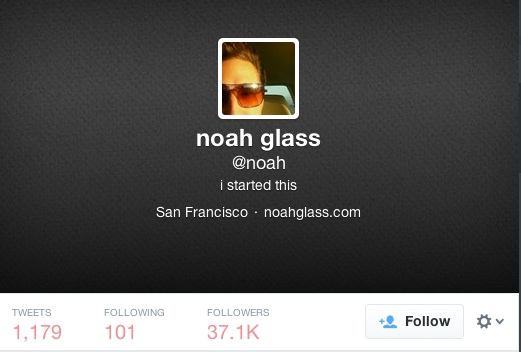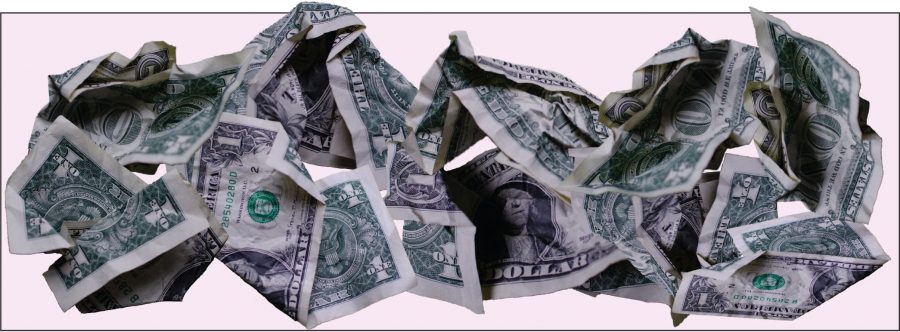Since its creation in 2006, Twitter has become a phenomenon. Jam-packed with up-to-the-minute news reports, celebrity gossip, and high school drama this website has captivated millions. The convenient and fast-pace style of Twitter has transformed the way the modern world learns, interacts and receives information.
[tabs active=”4″][tab title=”The Fundamentals”]
[heading size=”18″ margin=”10″]The Fundamentals[/heading]
[dropcap style=”simple” size=”3″]T[/dropcap]he Twitter bird took its first breath in 2006 and does not seem to be stopping anytime soon. Below is a timeline of major events within the current Twitter lifetime, everything from the very first tweet to the introduction to hashtags. To get you started, here’s a bit about the four key players in the world of Twitter.
Jack Dorsey: Dorsey is the man who first came up with the idea for Twitter while working in Silicon Valley, Calif. on other online projects. Dorsey was also the one who sent out the world’s very first tweet later in 2006. Currently, he is Chairman of Twitter, the originally small-scale idea which has ended up making him billions of dollars. In 2012, he received the “Innovator of the Year Award” for technology from the Wall Street Journal. As of now, he lives in San Francisco, Calif. (And, he’s from St. Louis!)
Noah Glass: Glass is the one with whom Dorsey first shared the idea for a simple social networking site one late night after a round of drinks. However, Glass did not last long in the Twitter company, as he was fired in 2006 by Evan Williams, a fellow Twitter founder. Now, he is practically unaffiliated. He has the least amount of Twitter followers out of the four men, even though he was the man who came up for the name of the site, which was originally “twttr.” Glass sent out the third ever tweet to ever embrace the world, nearly ten short minutes after Dorsey.
Evan Williams: Williams was integral in fostering the growth of Twitter and helped lead the international website to where it is today, acting as CEO for multiple years. Williams was also a co-founder of Odeo, were the Twitter Founding Fathers all worked together in California pre-Twitter. He attended University of Nebraska at Lincoln but left after three semesters to pursue his passion: computers. Soon after, Williams found himself in Silicon Valley, Calif., preparing himself to begin creating Odeo.
Biz Stone: Stone was focused on building Odeo as fellow co-founder to Williams before Twitter came along. Along with Odeo and Twitter, Stone has also been involved in formulating Xanga, Blogger and Medium, all of which are other sites that encourage users to collaborate and connect. In 2009 he was named “Nerd of the Year” by GQ magazine, and is currently living in Corte Madera, Calif. As of now, Stone is also CEO of a company called Jelly, which allows people to search and connect through pictures.
Sarah Kinney
[/tab][tab title=”The New-Age Advertisement”]
[heading size=”18″ margin=”10″]The New Age-Advertisement[/heading]
[dropcap style=”simple” size=”3″]J[/dropcap]ack Dorsey, a college drop-out living in California, created twitter on March 21, 2006 as a way to quickly and easily share a status with friends. On that day, Dorsey sent out a tweet that read “just setting up my twitter.” This was the first tweet ever published. At the time, no one could have possibly predicted the level of importance that simple little website was going to have in the advertising world. Flash -forward eight years and 560 million users are sharing their thoughts with the world an average of 5,700 times per second. With the ability to post personal updates, work updates, links, news, videos and pictures instantly, this social media empire is affecting the way people absorb and retain information, transforming the marketing world drastically.

Zimmer Radio and Marketing Group is the home to nine Missouri Radio Stations. Chelsea Robinson, Zimmer’s social media director, said twitter is becoming increasingly important in the radio world because it is a great way for radio DJs to have casual conversations with their fans . Sometimes people want to make song requests or chime in on a topic being discussed on air but do not have the guts to call the radio; Robinson said communicating over twitter is ideal for these listeners. She also said although there is always a DJ on air, and having that extra connection with listeners allows Zimmer stations to feel more personal and helps broadcast their name out into the community.
“Twitter is a great resource to have that constant engagement with [our listeners],” Robinson said. “It really gets people talking about us and helps us connect with the listener on a one-on-one basis which is often hard to do over the radio.”
The DJs who work for Zimmer Radio stations also use twitter to help each station market to their particular target group. The radio’s twitter accounts pay attention to what types of things are trending and what their customers are talking about. Games like “Show Us Your Tweet” are promoted every weeknight on Y107, a Zimmer Station. People participating in it tweet their song requests at the station’s account. Twitter allows for this company, and many others, to understand their customer’s likes and dislikes through interactive events like “Show Us Your Tweet.”
Other local businesses, such as Hotbox Cookies located in downtown Columbia, are using Twitter to get customers in the door and encourage them to spread the word about the melt-in-your-mouth cookies being sold at Hotbox. Hotbox Social Media Director, Lauren Critchfield, said that twitter was a no-brainer for the bakery because a fourth of twitter users are between the ages of 18 and 25, which is Hotbox’s primary target market.
“We saw on our personal accounts that there was existing buzz surrounding Hotbox,” Critchfield said, “so it was only natural for us to increase communication with our customers through twitter.”
And creating a twitter account has been worth it for this local business- people love it!
“I go downtown often so I can stop by Hotbox,” said junior, Matt McManus.” I always look forward to their ready t0 go, warm and gooey cookies.”
On Hotbox’s Twitter account, customers can find their location, their website address, pictures and a list of on-going giveaways and promotions.
“Twitter has absolutely helped increase our sales,” Critchfield said. “We publish a lot of photos of our product and try to engage users with random retweet contests.”
Hotbox employees believe that if someone sees a picture of one of their gooey, freshly-baked cookies while scrolling through their timeline, they will want to retweet the photo and run downtown to buy one.
So how are twitter users responding to the advertisements on their timeline? Many think these tweets are a great way to see what is happening in the community and find out about special contests or events.
![DSC_0074[1]](https://bearingnews.org/wp-content/uploads/2014/03/DSC_00741-640x426.jpg)
“Once I won free tickets to a Tim McGraw concert through twitter,” said Sam Wohlbold, an RBHS senior. Eli Stout, also a senior, said he has retweeted many tweets to win an iPhone. Although it has never worked, he and his friends still think participating in the contest are worth a shot.
With nearly 550 million registered Twitter users, Twitter is currently the fastest growing social media site in the world. Businesses have responded to it’s exponential growth and seized this time as a major marketing opportunity. Today, about 34% of advertisers are using twitter to generate leads and seeing a major payoff. The creative ways that companies are now trying to reach their customers have benefited the seller, the consumer and Twitter as a whole. 87% of Twitter’s revenue comes from advertisements, 3 million websites worldwide are intertwined with Twitter and 100 million twitter users are entertained and informed by these tweets at least once a day.
Hanna Flanagan
[/tab][tab title=”Media Mania”] [heading size=”18″ margin=”10″]Media Mania[/heading]However, every tweet isn’t always just an update on what that individual is up to. People tweet about others just as often. Everything from a sly picture of that kid who fell asleep in class (which, by the way, is two times more likely to be favorited or retweeted) to the gossip overheard in the hallway, the Twitter world has seen.
And if one high schooler isn’t directly filling someone else’s timeline with 140-character blurbs of distorted reality, they’re reading those messages of others to keep up. Scrolling, watching, absorbing. RBHS sophomore Dayna Linneman says she spends so much time on her Twitter feed for that exact reason: to stay updated on what’s going on around her.
“I check Twitter during most of my classes to keep up with everything,” Linneman says. “I love it. I can’t go without checking it; it’s the best.”
In fact, Teenagers spend more than seven and a half hours daily doing just that: consuming media, according to a 2010 study by the Kaiser Family Foundation. Whether it’s checking Twitter, watching YouTube or texting, teenagers are almost constantly doing it.
But wait: a single day is only 24 hours. Teenagers are already spending almost a third of it staring at their phones. According to the National Sleep Foundation, teenagers need about nine hours of sleep per night (but, to be honest: most of them are getting around six or seven). So, if high school students are spending seven and a half hours a day on their phones, seven asleep, seven at school, and another two or three doing homework or attending soccer practice, that adds up to just about 24 hours, which leaves little to no time for sitting down for dinner with family, going outdoors or playing with the dog. If RBHS sophomore Claudia Dunscombe spent less time on Twitter, she said she’d spend more time reading books.
“I wish I had more time to read and learn about new things,” Dunscombe says,”but instead, I’m tied down by this need to always use my free time on Twitter.”
Before teenagers spent so much time online, they had a considerably higher amount of hours a day for spending time with family and friends face-to-face, hearing what they had to say and learning valuable life lessons. Practicing psychologist Hope Gilchrist of Jonesboro, Ark. says since teenagers are spending so much time in the world of media, their values and outlook on the world are changing.
“Values can be affected,” Gilchrist says, “as all those media sources are pretty unreal. Values can be shaped by unrealistic standards that don’t exist in the real world.”
Because of this, teenagers begin to feel even more pressure than they normally do going through adolescence. Seven and a half hours more, to be exact.
“I would think [spending so much time on social media] might cause teens to have unreachable ideals for themselves,” Gilchrist says, “as in appearance, perfection, etc… no one looks like the images they are bombarded with.”
This growing strain of the constant onslaught of expectations may lead to faltering self-esteem in high schoolers. And when self-esteem begins to crack, teenagers find ways to try to repair those cracks, and often that means trying to push others down. And what’s a more public, accessible and beloved place to spread rumors and put others down than Twitter. High schoolers are on it constantly, so hundreds can see the tweets. How crowd-pleasing those tweets are can be numerically measured by favorites and retweets. It’s a perfect system for gaining self esteem.

“People will do anything to get favorites or retweets,” Noltie says. “If it’s to make fun of someone and they know people will agree with it, they’ll tweet about it.”
Monitoring how many favorites and retweets one’s account gets in a day is something teenagers do almost religiously, requiring constant checking of the Twitter app. So, now, teenagers are not only reading up on what everyone else is gossiping about, but also checking the status of their own gossip. By sending out rude tweets about someone else, the tweet-ee’s self-esteem fractures, the tweet-er’s is artificially inflated, and more and more people continually check their phones for updates on the back-and-forth. Every day, the cycle breathes on.
This fixation on scrutinizing the system is what led RBHS sophomore Ronni Farid to delete not only the Twitter app off her phone, but also, at one point, her entire Twitter account. She took a step back and determined that spending too much time on social media on her phone was starting to affect other areas of her life, such as her schoolwork.
“When I’m bored in class, I’ll just sit there and scroll through [Twitter],” Farid says. “I’ll end up not paying attention and having to get the material from someone else.”
Farid decided she needed to focus more in every area of her life. She deleted her account so that she wouldn’t be tempted to absentmindedly scroll through her feed every time her attention wasn’t otherwise fully occupied. This itching temptation is a side effect of spending so much time consumed in media in the first place, Gilchrist says.
“Persons with excessive focus on media,” Gilchrist says, “seem to need more stimulation to hold their attention and seem to bore easily. This change can affect attention and motivation.”
Gilchrist may even go so far as to combine this dent in motivation and desire to fill it with social media as an addiction.
“The definition for [an addiction],” Gilchrist says, “is if it is causing problems in the person’s life, the activity increases and attempts to stop or decrease are unsuccessful. I think it is highly possible it could be an addiction.”
![DSC_0071[1]](https://bearingnews.org/wp-content/uploads/2014/03/DSC_00711-640x426.jpg)
“The brains of teens are still developing,” she says, “and social interaction with other live humans is vital for development… [those who spend too much time consumed in media] tend to not socialize well.”
And socializing is something at which Farid consciously makes an effort to strive. She limits herself from the hankering hang-up of Twitter by often deleting the app off her phone and attempting to put more focus on one thing at a time. Farid decided that she could be doing so much more with seven and a half precious hours of her day then reading about the people by whom she is already surrounded day in and day out.
“I wanted to get off my phone,” Farid says. “I wanted to be more active. I wanted to go outside.”
See what RBHS students and teachers have to say about Twitter for themselves.
[vsw id=”92349043″ source=”vimeo” width=”425″ height=”344″ autoplay=”no”]
Sarah Kinney
[/tab][tab title=”Twitter at RBHS”]
[heading size=”18″ margin=”10″]Twitter at RBHS[/heading]
[dropcap style=”simple” size=”3″]S[/dropcap]eniors Jack Schimpf, Adam Burnam and Nate Horvit are all very active members of the RBHS community. Schimpf is the president of Student Council and uses Twitter to inform other officers and class representatives of meetings or after-school activities. Burnam is one of the four leaders of the Bru Crew and says Twitter is a great way to let RBHS students know about sporting events throughout the year. Finally, Horvit is the president of Key Club and thinks Twitter is the most efficient way to communicate to club members.
[/audio]
Celebrities have pioneered the Twitter movement by trending topics across the world and gaining millions of followers. Here is a look at the most popular celebrity Twitter accounts.

Source:http://twittercounter.com/pages/100
Source:
Hanna Flanagan
[/tab] [/tabs]


















































































Lauren Hofmann • Nov 7, 2014 at 11:00 am
I would have liked if this article tied a little bit more directly to RB, I liked the other info. it just seems like it would have been more captivating if there was more on twitter and Rock Bridge.